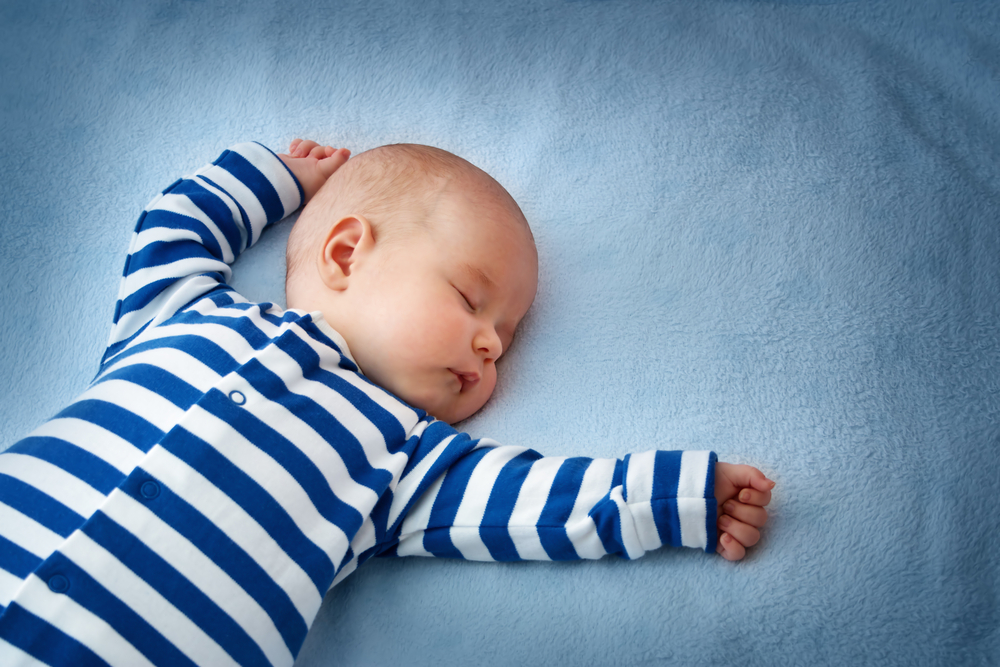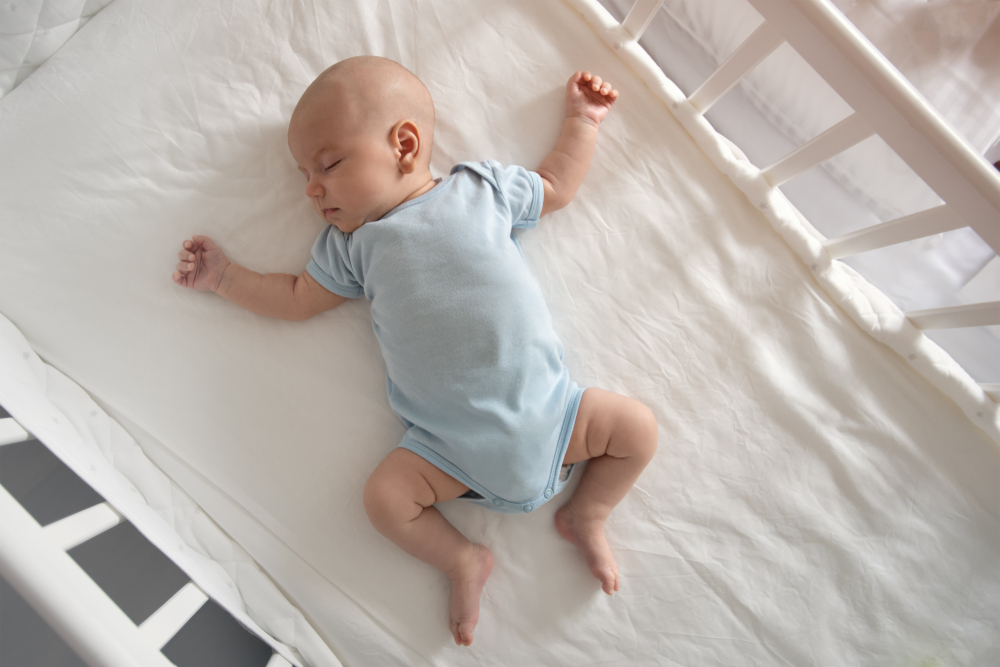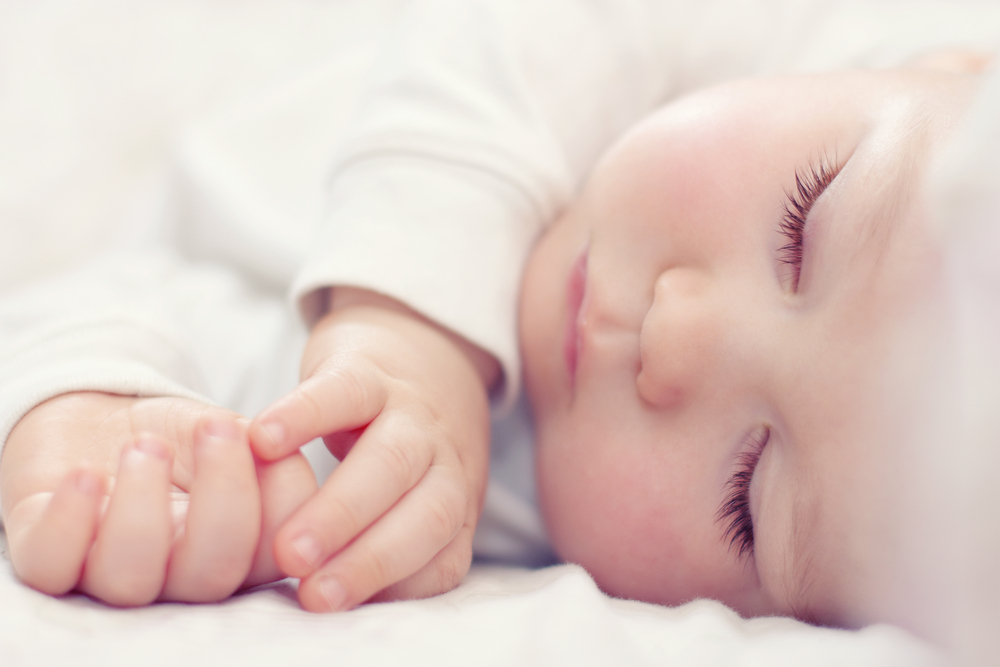Sleep is one of the biggest concerns when it comes to being a new parent; getting enough of it yourself and making sure that your baby is safe can be pretty hectic. Sleep is crucial to everyone’s wellbeing in the family and we understand it can feel very overwhelming especially if you’re worrying about safe sleep.
Here we have put together some excellent tips on safe sleeping as well as some handy advice on how to get your baby to sleep, making the transition to their own room and what to do about daytime naps. Remember that every baby and family situation is different so take what you think will work for you and your baby and leave the rest, as not everything will work for every family.
Safe sleep for your newborn
Let’s start right at the beginning with a newborn and how you can make sleep as safe as possible.
Where should a newborn sleep?
A baby should sleep in your room for the first 6 months. This is because it reduces the risk of Sudden Infant Death Syndrome (SIDS).
Your baby can either be in a Moses basket, which are beautiful basket-weaved cribs that are the perfect size for a newborn, a bedside crib that is designed to go next to your bed for close sleeping, or a cot or cot bed which are bigger and will last longer. Most parents choose either a Moses basket or bedside crib as their baby’s first sleeping space as cots and cot beds can look a little big for newborns.
The Lullaby Trust advises against co-sleeping (sleeping in the same bed or space as your baby) as this can be dangerous. However, we know it can happen from time to time so there are a few things you can do to make it safer for your baby.
- Keep the sleep space clear of pillows, blankets etc that might block your baby’s airways
- Make sure they can’t fall out of bed
- Keep pets off the bed
- Don’t fall asleep in an armchair or sofa with a baby as these are high-risk areas.
Overall, the safest place for your baby to sleep in the first 6 months is in the same room as you, in their own sleep space such as a Moses basket or bedside crib, using only a fitted sheet for bedding. An alternative is to use a travel cot and even some carrycots are suitable for overnight sleeping.
What should a newborn wear to bed?
Your baby should sleep in a sleeping bag or use a swaddle to wrap them up. Using a duvet, blanket or pillows is not recommended until they reach around 12-18 months old, as your baby can get trapped underneath them.
What your baby wears underneath the sleeping bag or swaddle will depend on the temperature. The ideal room temperature for a baby is 16-20 degrees Celsius and you can use a room thermometer to help you. If the temperature is closer to 16 degrees, try putting your little wriggler into a sleepsuit or baby grow. If the temperature is closer to 20 degrees, try a long or short-sleeved vest.
It’s important to make sure your baby isn’t overheating and the best way to check this is to put the back of your hand on your baby’s chest or back. You can always use a baby thermometer too.
What position should a newborn sleep in?
The Lullaby Trust recommends that the safest way for a newborn to sleep is on their back – feet to the foot of the crib (unless parents are told otherwise by a medical professional). The position your newborn sleeps in is one of the most protective actions you can take to ensure they are as safe as possible while sleeping.
Once your baby has started to roll over onto their tummy by themselves, they can choose their favourite sleeping position. This is no reason to panic; it is their choice and preference. It can, however, sometimes disrupt sleep whilst they are still figuring out what they prefer. Plenty of practice rolling over in the daytime can help to minimise the disruption.
Tips on getting your baby to sleep
Now you know how to put your baby down to sleep safely, you’ll want to know the best tips on getting your baby to sleep so the whole family can get some well-needed rest.
In the first few months of your angel getting to know the world, their social, emotional and intellectual skills slowly mature. During this time, new experiences can cause your little one to create new things to worry about, be conscious of, think about and be afraid of, which can disrupt their sleep pattern.
However, there are things you can do to make it easier for them, such as:
- Having a consistent bedtime routine. A good routine to follow is the 5 Bs, bath, book, bedtime songs/music, baby massage and bottle/breastfeeding
- Promote regular naps during the day at the same time and for the same length where possible
- Give cuddles before bedtime so your baby feels safe and secure
- Try sensory input such as white noise and gentle lights (although this distracts some babies)
- Create a calming and comfortable environment.
There are plenty of baby sleep aids to help your baby get to sleep such as our Babymoov Sleepy Nightlight and White Noise device that has a choice of 7 different sounds and multi-coloured night lights.
Transitioning into their own room
When you and your baby are ready to make the transition from close sleeping to the crib and into their own room, it can be a daunting task for both parent and baby. There are a few things you can do to help the transition go as smoothly as possible.
- Allow your baby to get used to their environment by putting them in the new crib in their new room for daytime naps
- Continue with the same bedtime routine
- Get a baby monitor so you can keep an eye on them
- Continue to practise safe sleep, as mentioned above
- Be patient and give your baby lots of love so they feel safe and secure.
What to put in a cot
We know it can be exciting to move your baby into a big cot and every parent wants to create a warm and comfortable environment for their baby. It can be tempting to fill your baby’s cot with bedding, blankets and teddies but you might want to hold off on that just for now.
You should avoid using bedding in a cot until your baby reaches at least 12 months old and then you can buy a beautiful bedding set to go in their cot. If you want to use a light blanket for your baby, make sure it’s secure and tucked under your baby’s arms to reduce the risk of SIDS.
A lot of parents wonder if cot bumpers are safe and how to protect their babies from hitting their heads on the crib. Cot bumpers are not considered safe to have a cot as they pose a suffocation risk so the best way to avoid them banging their head is to put them down with their feet at the foot of the cot.
Daytime naps
For daytime naps, follow the same safety advice for nighttime and they should be in the same room as you until they are at least 6 months old. If you’re trying to get your baby to sleep for longer periods at night, don’t stop their daytime napping as this could be detrimental to their development, but try to be consistent with them.
As your baby gets older and grows to be a toddler, they will need fewer daytime naps. If you’re putting your baby or toddler in their own room for a day nap but they are struggling to sleep, don’t leave them alone for any longer than 30 minutes at a time.
Follow all the advice in this post to ensure your baby is in the safest possible sleep environment. For more information or if you’re ever unsure, contact your health visitor, midwife or doctor. For more sleep products such as cots, Moses baskets, sleeping bags and bedding, have a look at our website.



